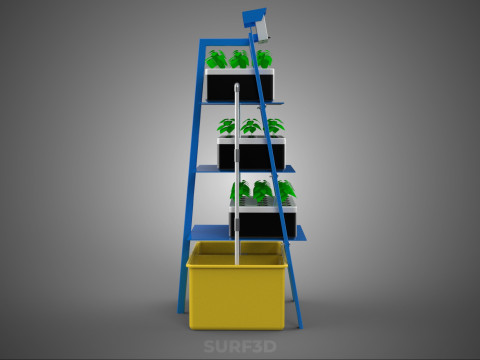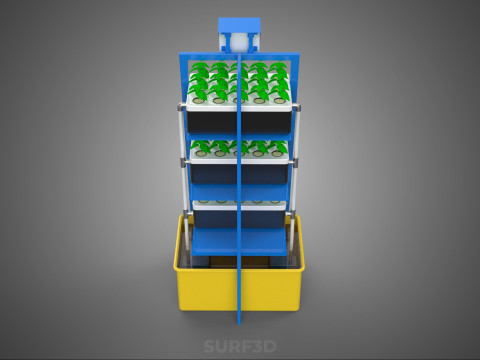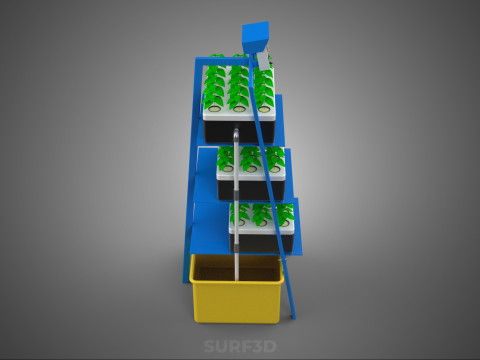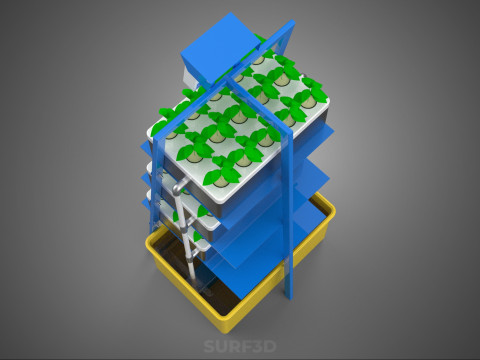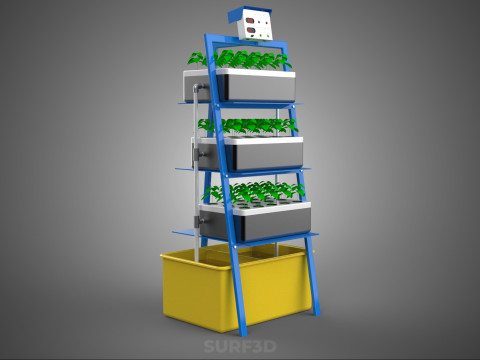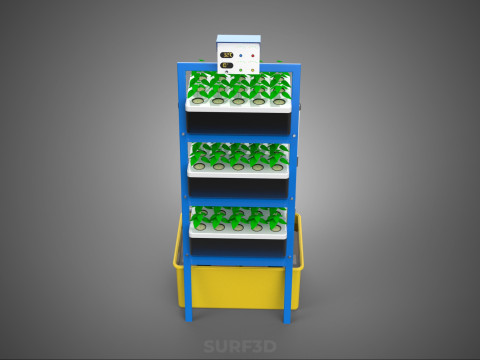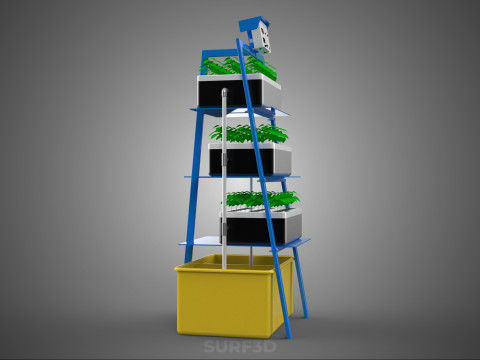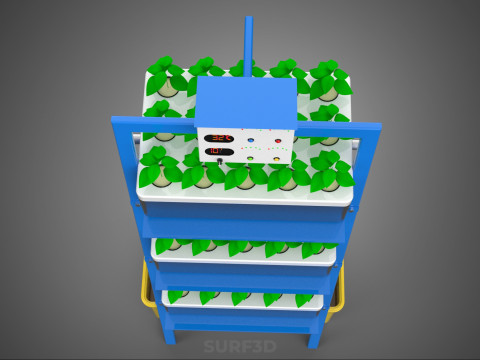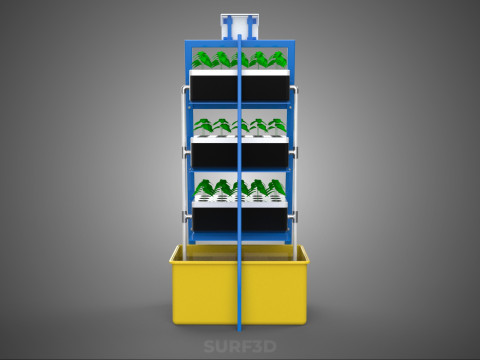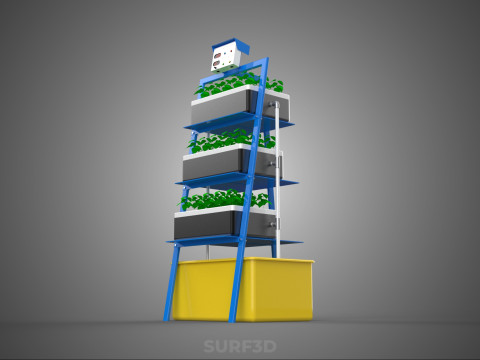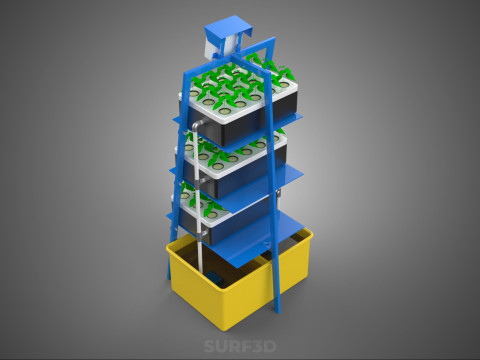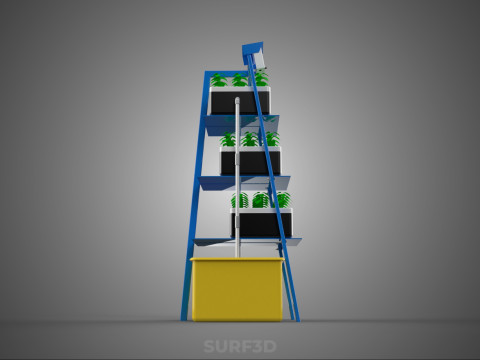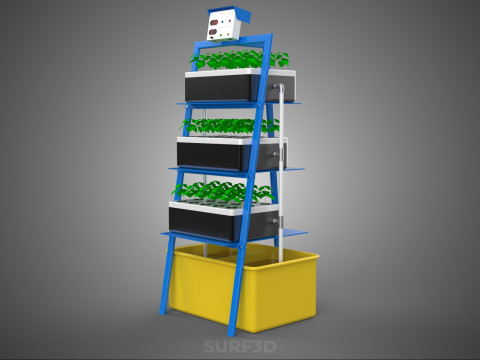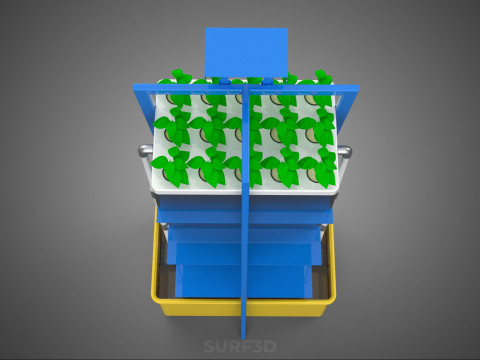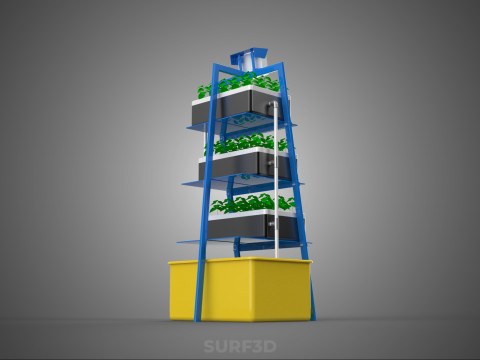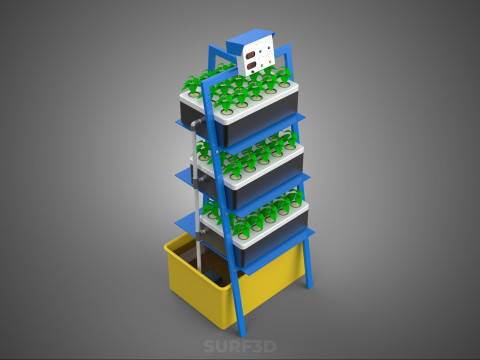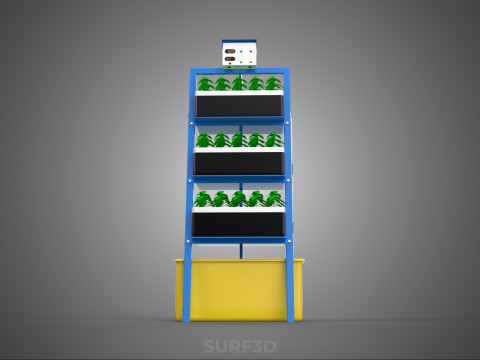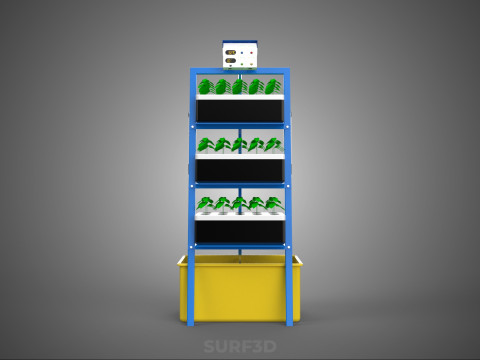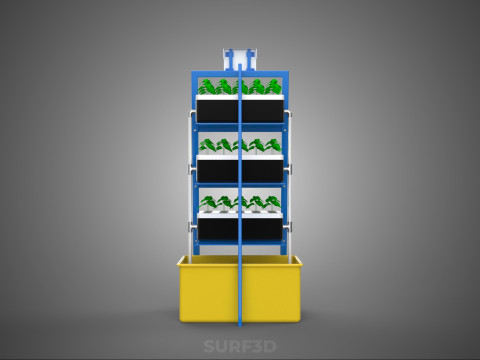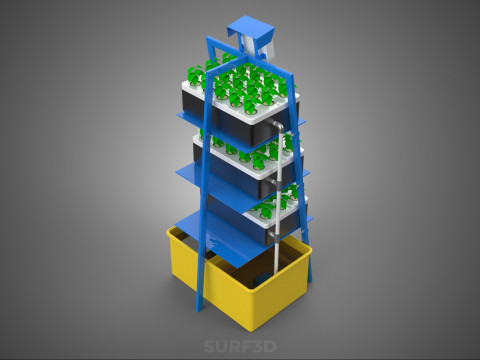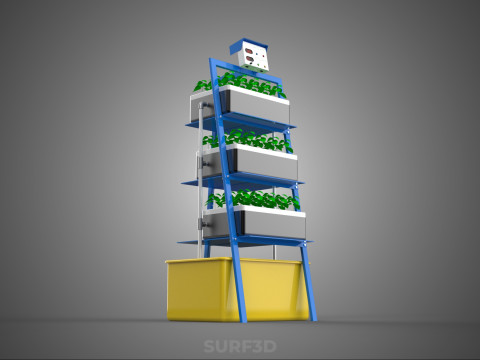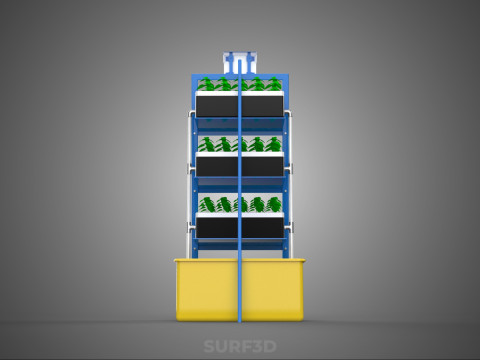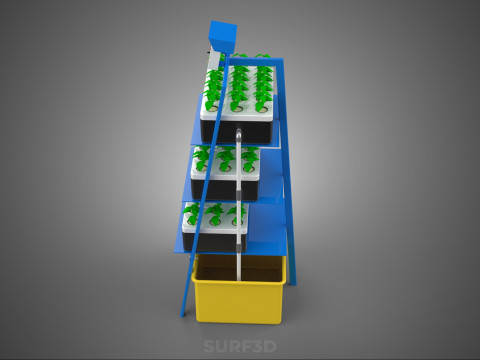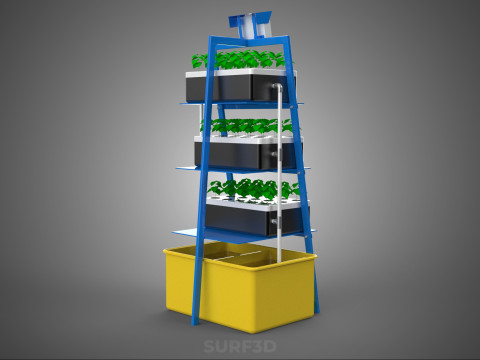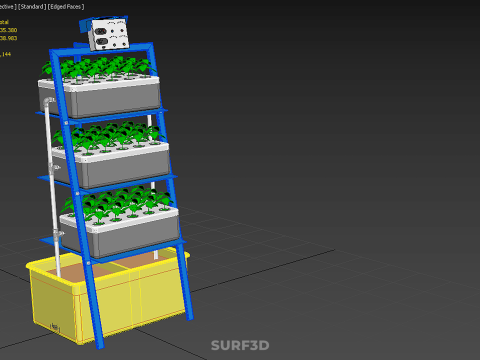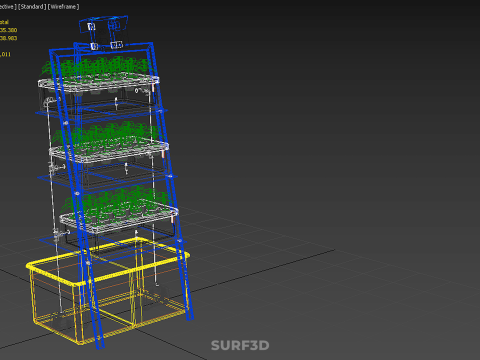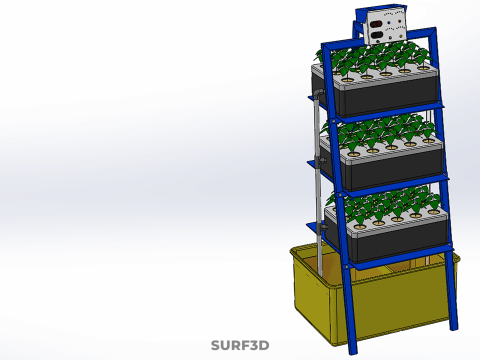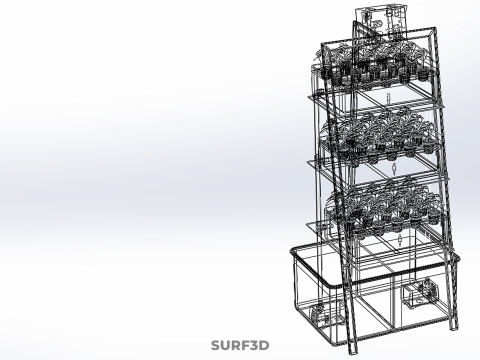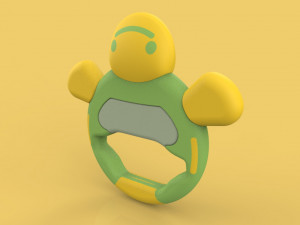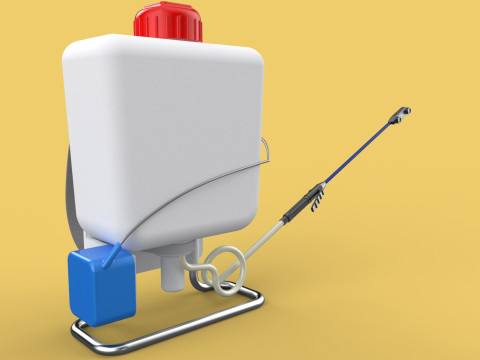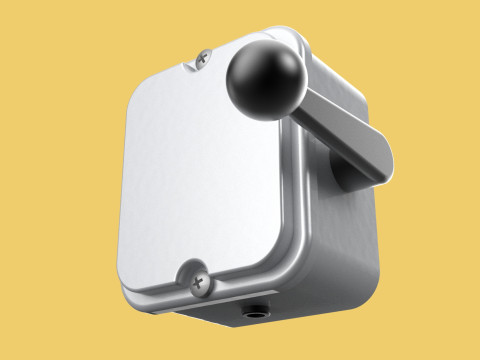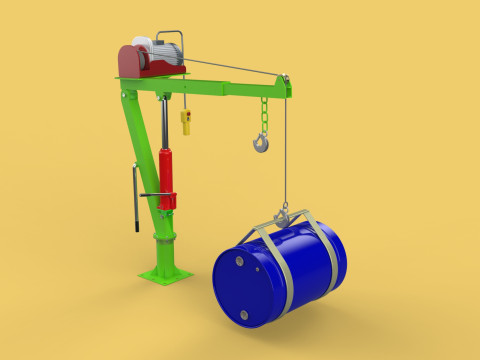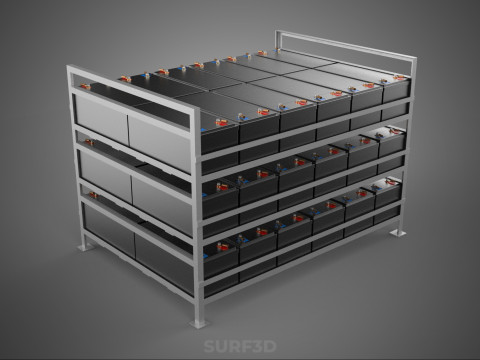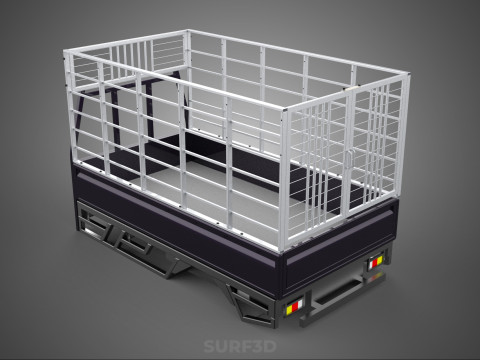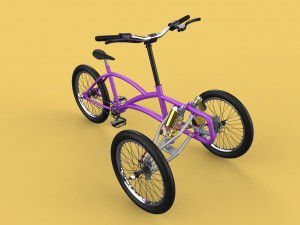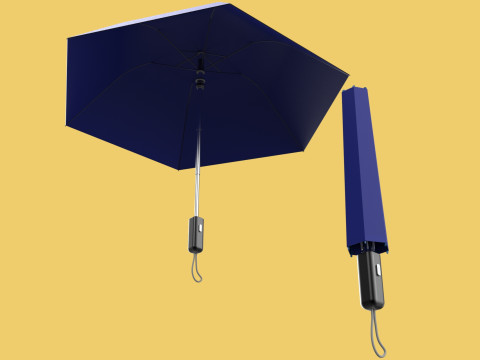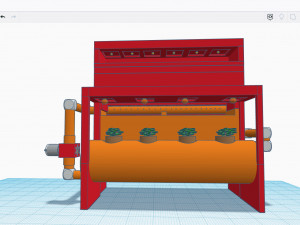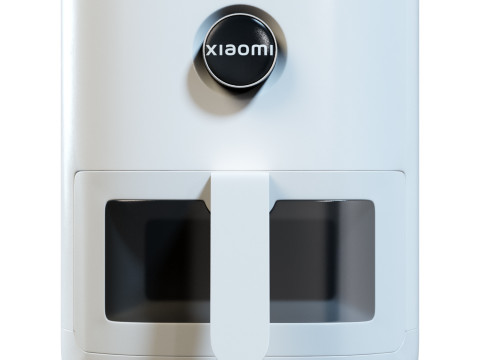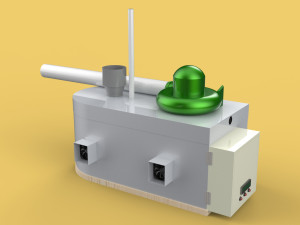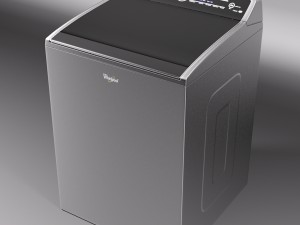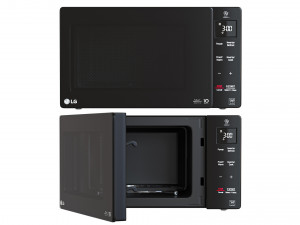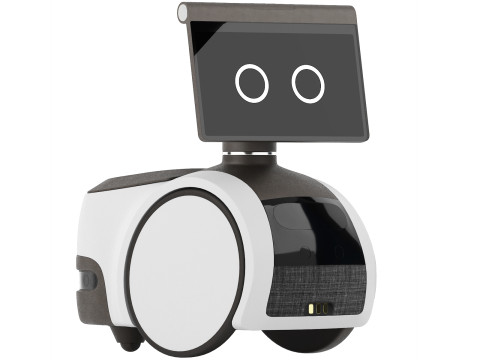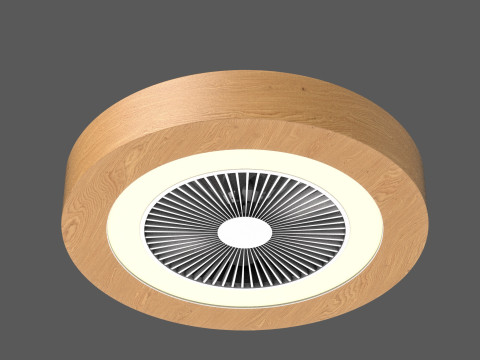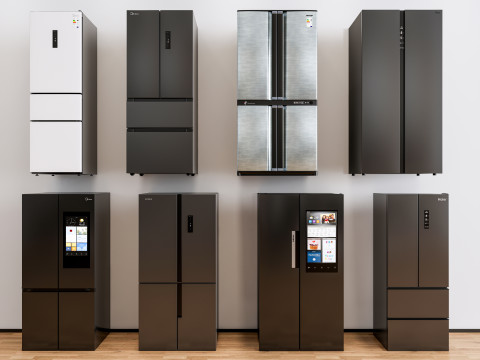SMART HOME IOT NFT HYDROPONIC PLANT FARM CULTIVATION MONITORING 3D Model
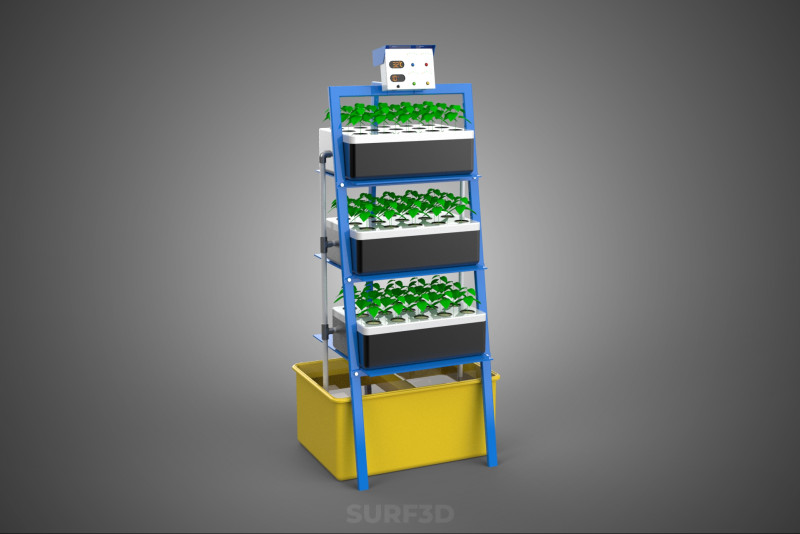
expires on 5th Sep, 25
- Mogelijke formaten: Autodesk 3DS MAX (.max) 14.39 MBACIS(.sat) 5.87 MBSTEP (.step) 1.01 MBCollada (.dae) 7.38 MBAutodesk FBX (.fbx) 20.19 MBWavefront OBJ (.obj) 10.41 MBAutoCAD (.dwg) 3.41 MBBlender3D (.blend) 10.00 MBSketchUp (.skp) 3.54 MB3D Studio (.3ds) 3.90 MBStereolithography (.stl) 13.33 MBRhinoceros (.3dm) 5.59 MBIGES (.iges) 1.30 MBGLB (.glb / .gltf) 4.82 MB
- Polygonen:935380
- Hoekpunten:638983
- Geanimeerd:No
- Texturen:No
- Gemanipuleerd:No
- Materialen:
- Low-poly:No
- Collectie:No
- UVW-toewijzing:No
- Plugins Gebruikt:No
- Afdruk Gereed:No
- 3D scan:No
- Volwassen:No
- PBR:No
- AI-training:No
- Geometrie:Poly NURBS
- Onverpakte UV's:Unknown
- Aantal keer bekeken:70
- Datum: 2025-08-27
- Item ID:595104
High-quality 3D assets at affordable prices — trusted by designers, engineers, and creators worldwide. Made with care to be versatile, accessible, and ready for your pipeline.
Included File Formats
This model is provided in 14 widely supported formats, ensuring maximum compatibility:
• - FBX (.fbx) – Standard format for most 3D software and pipelines
• - OBJ + MTL (.obj, .mtl) – Wavefront format, widely used and compatible
• - STL (.stl) – Exported mesh geometry; may be suitable for 3D printing with adjustments
• - STEP (.step, .stp) – CAD format using NURBS surfaces
• - IGES (.iges, .igs) – Common format for CAD/CAM and engineering workflows (NURBS)
• - SAT (.sat) – ACIS solid model format (NURBS)
• - DAE (.dae) – Collada format for 3D applications and animations
• - glTF (.glb) – Modern, lightweight format for web, AR, and real-time engines
• - 3DS (.3ds) – Legacy format with broad software support
• - 3ds Max (.max) – Provided for 3ds Max users
• - Blender (.blend) – Provided for Blender users
• - SketchUp (.skp) – Compatible with all SketchUp versions
• - AutoCAD (.dwg) – Suitable for technical and architectural workflows
• - Rhino (.3dm) – Provided for Rhino users
Model Info
• - All files are checked and tested for integrity and correct content
• - Geometry uses real-world scale; model resolution varies depending on the product (high or low poly)
• • - Scene setup and mesh structure may vary depending on model complexity
• - Rendered using Luxion KeyShot
• - Affordable price with professional detailing
Buy with confidence. Quality and compatibility guaranteed.
If you have any questions about the file formats, feel free to send us a message — we're happy to assist you!
Sincerely,
SURF3D
Trusted source for professional and affordable 3D models.
More Information About 3D Model :
"SMART HOME IOT NFT HYDROPONIC PLANT FARM CULTIVATION MONITORING" designates a sophisticated, convergent technological ecosystem engineered for automated, data-driven, and verifiable indoor plant cultivation within a residential environment. This integrated system leverages the principles of hydroponics, specifically the Nutrient Film Technique (NFT), with real-time data acquisition and control facilitated by the Internet of Things (IoT), seamless integration into smart home platforms, and the unique capabilities of Non-Fungible Tokens (NFTs) for digital asset representation and provenance tracking.
At its core, the system utilizes a hydroponic plant farm, a soilless cultivation method that delivers nutrient-rich water directly to plant roots. The Nutrient Film Technique (NFT) is a widely adopted hydroponic method wherein a very shallow stream of recirculating water, containing dissolved nutrients, flows past the bare roots of plants. This constant flow provides essential water, nutrients, and oxygen, promoting rapid growth and high yields while significantly reducing water consumption compared to traditional soil-based agriculture. Common crops ideally suited for NFT include leafy greens, herbs, and certain fruits like strawberries, cultivated in specialized channels or troughs.
The "Cultivation Monitoring" aspect is critically enabled by the Internet of Things (IoT). A network of interconnected sensors continuously gathers vital environmental and plant-specific data. Key parameters monitored typically include:
* **Nutrient Solution:** pH (acidity/alkalinity), Electrical Conductivity (EC) or Total Dissolved Solids (TDS) (indicating nutrient concentration), and water temperature.
* ********t Environment:** Air temperature, relative humidity, Photosynthetically Active Radiation (PAR) or light intensity, and potentially carbon dioxide (CO2) levels.
* **System Status:** Water level in the reservoir, operational status of pumps, and grow light schedules.
These sensors transmit data via Wi-Fi, Bluetooth, Zigbee, or other standard IoT protocols to a central hub or cloud-based platform. This real-time data stream allows for precise adjustments and informed decision-making regarding nutrient delivery, light cycles, and climate control, thereby ensuring optimal growth conditions. Actuators, also controlled via IoT, can automatically adjust pH (through acid/base dosing), replenish nutrient solutions, switch grow lights, and operate ventilation fans or water pumps based on pre-set parameters or analytical insights derived from the monitored data.
The system's integration into a "Smart Home" environment enhances user convenience and control. It connects with existing smart home ecosystems (e.g., Apple HomeKit, Google Home, Amazon Alexa, or general Matter-enabled platforms) allowing users to monitor and control their hydroponic farm alongside other smart devices like lighting, thermostats, and security systems. Users can access comprehensive data dashboards, receive alerts for critical parameter deviations (e.g., low water level, abnormal pH), and remotely adjust settings via dedicated smartphone applications or voice commands. This integration facilitates a holistic approach to home automation, making urban and indoor farming accessible and manageable for residential users.
The inclusion of "NFT" (Non-Fungible Token) introduces a novel layer of digital asset management, transparency, and verifiable provenance. NFTs, unique digital tokens recorded on a blockchain, can represent various aspects related to the physical hydroponic farm or its produce:
* **Digital Twin & Ownership:** An NFT could represent fractional or full ownership of a specific "plot," plant, or the entire farm hardware, enabling shared access or verifiable transfer of ownership rights.
* **Provenance & Traceability:** Each harvest, or even individual plants, can be associated with an NFT that immutably records its entire cultivation history, including sensor data (pH, EC, temperature, light, CO2), nutrient regimes, and growth timelines. This provides verifiable proof of origin and cultivation methods, significantly enhancing consumer trust for home-grown produce, community farm shares, or local sales.
* **Gamification & Community:** NFTs can facilitate community engagement, reward systems for successful cultivation practices, or represent unique "digital collectibles" linked to the farm's output or performance.
* **Data Monetization & Research:** Aggregated and anonymized cultivation data could be tokenized, with NFTs granting access rights or ownership of specific data sets for agricultural research, predictive analytics, or optimizing cultivation strategies.
* **Supply Chain Integration (Micro-Farms):** For produce intended for sharing or local commerce, the NFT acts as a digital certificate of authenticity, quality, and sustainable practice, enhancing transparency in hyper-local food supply chains.
The operational workflow involves continuous data streaming from IoT sensors, subsequent processing and visualization through user-friendly interfaces, and automated routines that ensure cultivation parameters remain within optimal ranges. In case of deviations, alerts are triggered, prompting either user intervention or automated corrective actions by actuators. The convergence of these technologies offers numerous benefits: maximized plant growth and yield, optimized resource consumption (water, nutrients, energy), reduced manual labor, enhanced food safety through controlled environments, and unprecedented transparency and verifiability of cultivation practices via NFTs. Challenges include the initial capital investment, technical complexity in setup and maintenance, ensuring data security and privacy, and navigating the evolving regulatory landscape surrounding NFTs. This integrated system represents a significant advancement in localized, sustainable, and data-driven agriculture, empowering individuals to cultivate food more effectively, transparently, and engagingly within their own homes.
Als u een ander formaat nodig heeft, open dan alstublieft een nieuwe Support Ticket en vraag om een ander formaat. Wij kunnen uw 3D modelen van vorm veranderen naar: .stl, .c4d, .obj, .fbx, .ma/.mb, .3ds, .3dm, .dxf/.dwg, .max. .blend, .skp, .glb. We converteren geen 3D scènes en formaten zoals .step, .iges, .stp, .sldprt.!


 English
English Español
Español Deutsch
Deutsch 日本語
日本語 Polska
Polska Français
Français 中國
中國 한국의
한국의 Українська
Українська Italiano
Italiano Nederlands
Nederlands Türkçe
Türkçe Português
Português Bahasa Indonesia
Bahasa Indonesia Русский
Русский हिंदी
हिंदी
